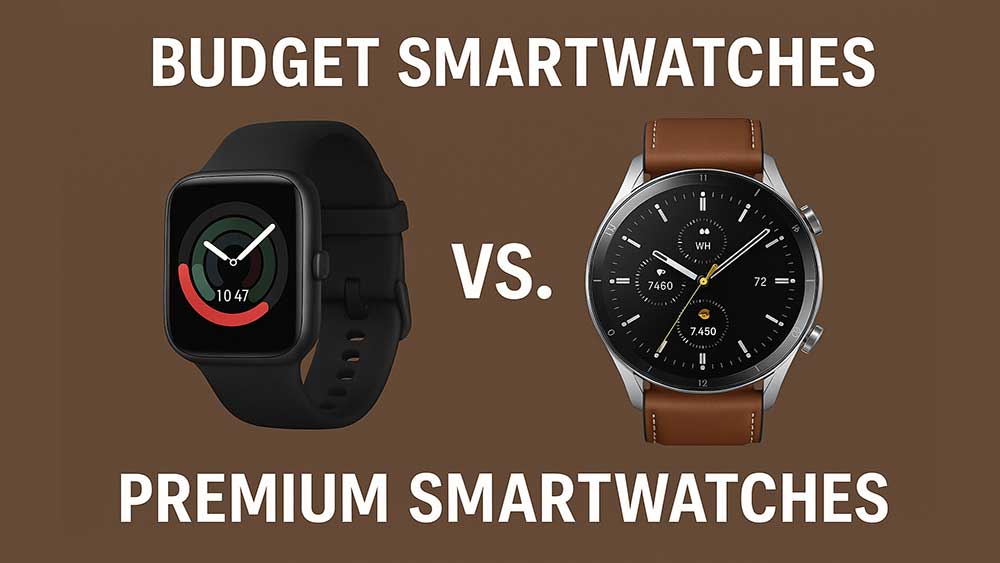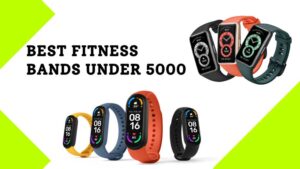Smartwatches have become essential gadgets for fitness tracking, notifications, and even standalone connectivity. However, with a wide range of options available, buyers often face a dilemma: Should you invest in a premium smartwatch, or will a budget-friendly option suffice? This guide will compare budget smartwatches vs. premium smartwatches to help you make an informed decision.
What Defines a Budget Smartwatch vs. Premium Smartwatch?
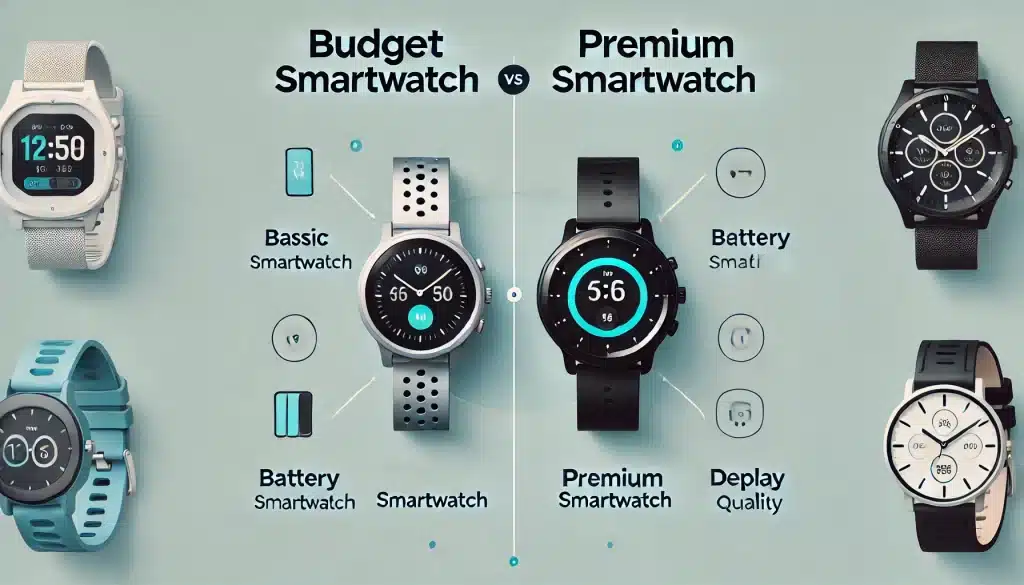
- Budget Smartwatches ($50 – $200): These devices offer basic features such as step tracking, heart rate monitoring, and smartphone notifications. They may lack advanced health sensors, high-end materials, and software support. Popular choices include Amazfit Bip 5 and Fitbit Versa 2.
- Premium Smartwatches ($300 – $1000+): High-end smartwatches come with the best smartwatch features, including advanced health tracking, standalone cellular connectivity, premium materials, and seamless integration with smartphone ecosystems. Some top-rated options are Apple Watch Series 10 and Samsung Galaxy Watch 6.
Key Comparisons
1. Design & Build Quality
- Budget: Often made of plastic or aluminum with basic strap options.
- Premium: Crafted from titanium, stainless steel, or ceramic with sapphire glass and luxury straps.
- Verdict: If durability and aesthetics matter, premium models are superior. Check out Garmin Venu 3S for a premium feel.
2. Display & User Experience
- Budget: LCD or lower-end OLED screens with basic touch functionality.
- Premium: High-resolution AMOLED, always-on displays, and superior brightness.
- Verdict: Premium smartwatches with the best displays provide better clarity, smoother interaction, and improved outdoor visibility. For the best display, consider Samsung Galaxy Watch 6.
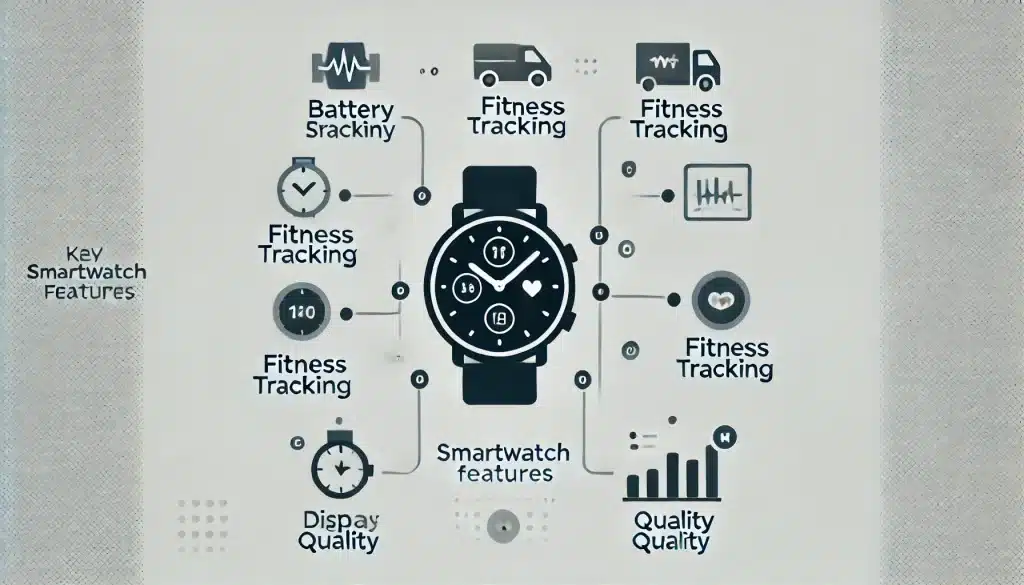
3. Health & Fitness Features
- Budget: Basic step counting, heart rate monitoring, and sleep tracking.
- Premium: ECG, blood oxygen monitoring, skin temperature sensors, and VO2 max tracking.
- Verdict: Best smartwatches for fitness tracking offer in-depth health insights and more accurate tracking. A good budget choice is Samsung – Galaxy Fit3 , while Apple Watch Series 10 is a premium option.
4. Battery Life
- Budget: Often lasts 5-10 days due to limited features.
- Premium: Usually 1-3 days, with some models offering power-saving modes.
- Verdict: Budget smartwatches with long battery life excel in endurance, but premium models provide more powerful features at the cost of frequent charging. For long battery life, check out Amazfit Bip 5.
5. Software & App Ecosystem
- Budget: Limited third-party app support, proprietary software, and fewer updates.
- Premium: Access to a vast app ecosystem (Wear OS, watchOS) with continuous updates.
- Verdict: Premium vs. budget smartwatch comparison shows that premium models win in software optimization, app support, and long-term updates.
6. Connectivity & Smart Features
- Budget: Basic Bluetooth connectivity, no standalone calling or LTE support.
- Premium: Standalone LTE, voice assistants, music streaming, and advanced NFC payments.
- Verdict: Standalone smartwatches vs budget models prove that premium smartwatches offer complete smartphone independence. If LTE support is essential, check out Samsung Galaxy Watch 6 LTE.
Are Expensive Smartwatches Worth It?
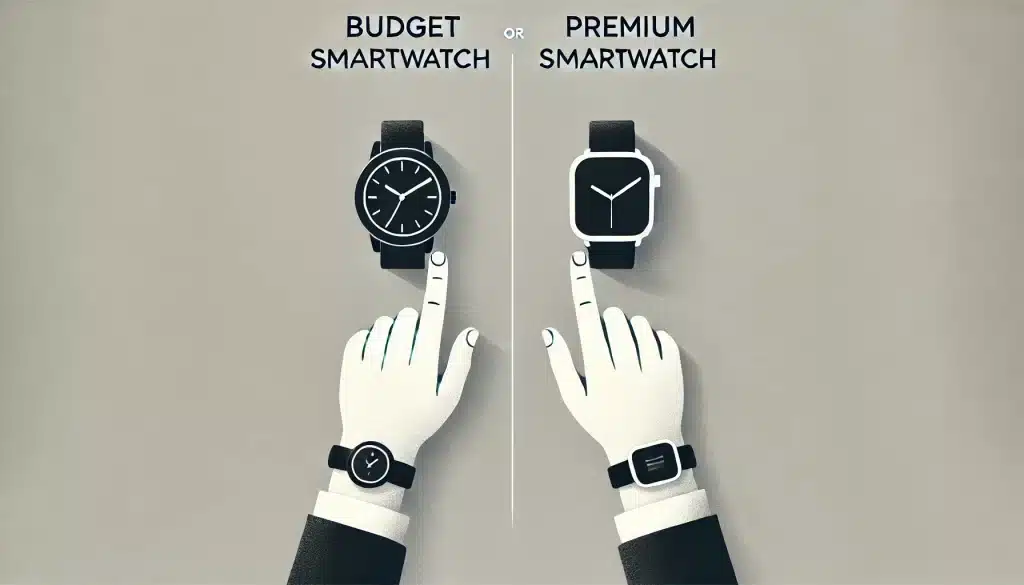
It depends on your needs:
- Go for a budget smartwatch if you need basic fitness tracking, long battery life, and affordability.
- Invest in a premium smartwatch if you require advanced health monitoring, cellular connectivity, premium materials, and seamless software integration.
Conclusion
While budget smartwatches offer great value for money, premium smartwatches with the best features provide a superior experience in every aspect. If you’re looking for a long-term smartwatch investment, a premium model is worth considering. However, if you’re on a budget and only need the essentials, the best budget smartwatch of 2025 will serve you well.
Which type of smartwatch do you prefer? Let us know in the comments!
Related Posts You May Like:

